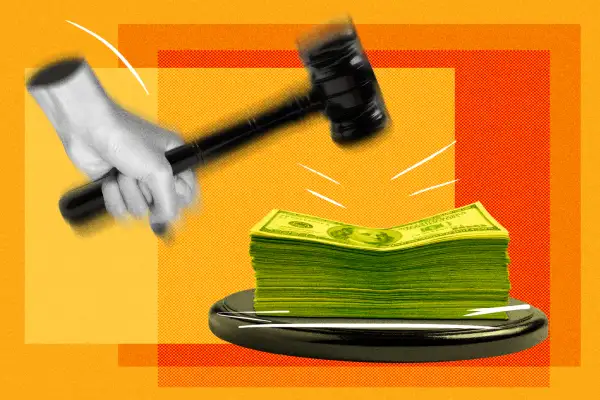What's the Difference Between Debt Relief and Debt Settlement?

If you’re struggling with overwhelming debt bills, debt relief — sometimes also referred to as debt settlement — may be the path for you. Whether you go it alone or sign up with a debt relief company, debt relief involves working with your creditors to settle your debt for less than you currently owe.
Sometimes you may also see the phrase debt relief used as a broad term that encompasses many different ways you can manage and negotiate your outstanding debt, including debt settlement as well as other strategies like debt consolidation, reducing interest and designing payment plans.
Here’s a look at how debt relief works, alternative options to get out of debt, and how to decide which is right for you.
How debt relief works
Debt relief is a process where borrowers negotiate with creditors to reduce the amount they owe. This process goes by a lot of different names: Along with debt settlement, it’s also called debt negotiation and debt resolution — with all of the terms referring to the same process of working with creditors to accept a lesser amount than you currently owe. It is also called debt forgiveness, since when it’s successful, it involves creditors writing off some of what you owe.
In general, there are two primary approaches to debt relief: You can either work with a debt relief company or you can take the do-it-yourself approach. For the DIY method, you should make a list of your debts, contact your creditors to explain why you can’t pay and have an explicit settlement offer ready.
While some borrowers are successful in negotiating a debt settlement on their own, you may find that you’ll have more success when working with an experienced debt settlement company, who have established relationships with creditors.
In that case, you’ll sign up with a debt relief company and start making monthly deposits into a savings account you control. As funds build up in that account, the company will negotiate with your creditors. Once they’ve negotiated a settlement (and you’ve approved the terms), the agreed amount is paid to the creditor from the funds in your account. After the creditor is paid, the debt relief company will also take their fees from your account. Note that it’s illegal for debt relief companies to charge any fees before they’ve settled a debt.
Generally, negotiated debt settlements are not offered for secured debt. Unlike unsecured balances (such as credit card debt and most personal loans), secured debt holds an asset as collateral. Because this debt is backed by something valuable, the lender has no real motivation to settle for less than you owe; they can simply seize your home, car, boat, savings account or whatever you used as collateral, rather than take a loss.
Instead, the debt settlement route is best suited for consumers with unsecured debt, which isn’t attached to an asset that a lender could seize. Because this form of debt poses a greater risk to lenders, they may be more willing to work with you and even settle the debt for less than you owe.
No matter what you choose to call it — and whether you go the DIY or debt relief company route — you should know that there’s no guarantee that creditors will be open to negotiating. One study commissioned by the American Association for Debt Resolution found that people who enrolled in debt relief programs had, on average, nearly 7 accounts. The typical enrollee ended up getting settlements for 3.7 accounts and an average write-down of 33% on settled accounts after accounting for fees.
Is debt relief or debt settlement right for you?
Debt relief may be a great option if you are struggling to make your monthly payments or feel like you’re drowning with high interest rates and fees. In particular, it may make sense if you’re already behind on your debt bills, are facing a documented financial hardship and have at least $7,500 in debt. But it’s important to understand that it can negatively affect your credit.
Because people pursuing debt relief often choose to stop paying their bills to get leverage to negotiate, their credit scores usually fall. Then, settled accounts are reported as negative items on your credit report. But after your accounts are settled, if you get back on track with managing your remaining bills and making payments on time, your credit score should bounce back.
Because of the credit downsides, you want to be sure you’ve first considered whether there are other options to reduce your monthly payments to make them more manageable, or even defer payments so you can catch up.
Depending on the type of debt you have, whether you’re up to date on payments and what you can currently afford, you might consider:
- consolidating multiple balances with a single loan
- refinancing certain debts into a loan with lower rates
- calling your creditors and asking for a reduced interest rate
- working with your lender to lower or adjust your monthly payment
- working with a credit counseling agency to make a debt management plan
Again, many of these options are sometimes grouped under the term of debt relief, in the sense that they can give you relief from your debt by changing the terms to help you pay it off. But if you (or a company) are negotiating the balance of what you owe, that is the specific definition of debt relief (and debt settlement), since you’ll ultimately be paying less than you owe.
More from Money:
5 Things People Get Wrong About Debt Relief
Debt Snowball vs. Debt Avalanche: Which Payoff Strategy Is Right for You?
